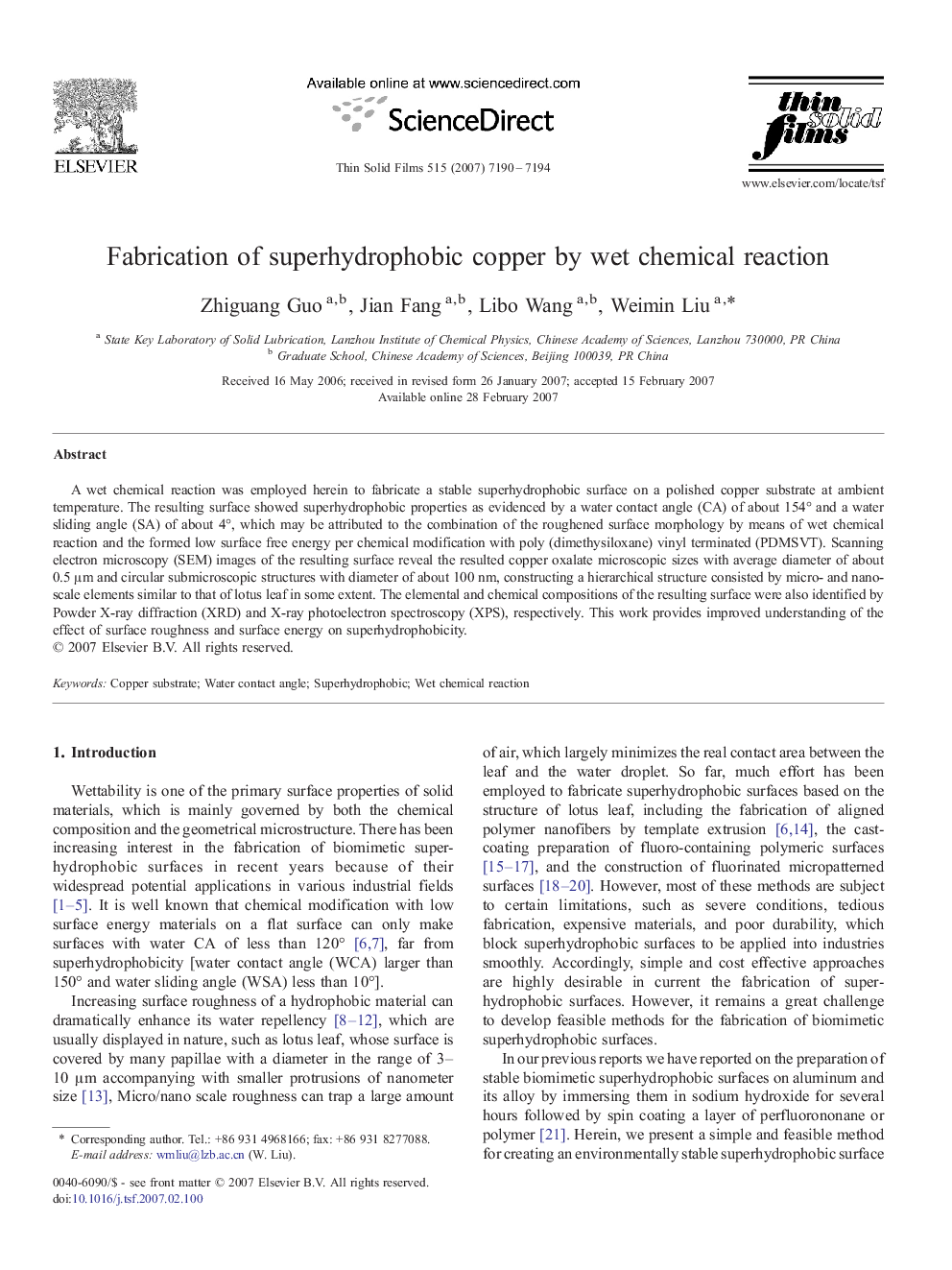| Article ID | Journal | Published Year | Pages | File Type |
|---|---|---|---|---|
| 1674764 | Thin Solid Films | 2007 | 5 Pages |
A wet chemical reaction was employed herein to fabricate a stable superhydrophobic surface on a polished copper substrate at ambient temperature. The resulting surface showed superhydrophobic properties as evidenced by a water contact angle (CA) of about 154° and a water sliding angle (SA) of about 4°, which may be attributed to the combination of the roughened surface morphology by means of wet chemical reaction and the formed low surface free energy per chemical modification with poly (dimethysiloxane) vinyl terminated (PDMSVT). Scanning electron microscopy (SEM) images of the resulting surface reveal the resulted copper oxalate microscopic sizes with average diameter of about 0.5 μm and circular submicroscopic structures with diameter of about 100 nm, constructing a hierarchical structure consisted by micro- and nano-scale elements similar to that of lotus leaf in some extent. The elemental and chemical compositions of the resulting surface were also identified by Powder X-ray diffraction (XRD) and X-ray photoelectron spectroscopy (XPS), respectively. This work provides improved understanding of the effect of surface roughness and surface energy on superhydrophobicity.
